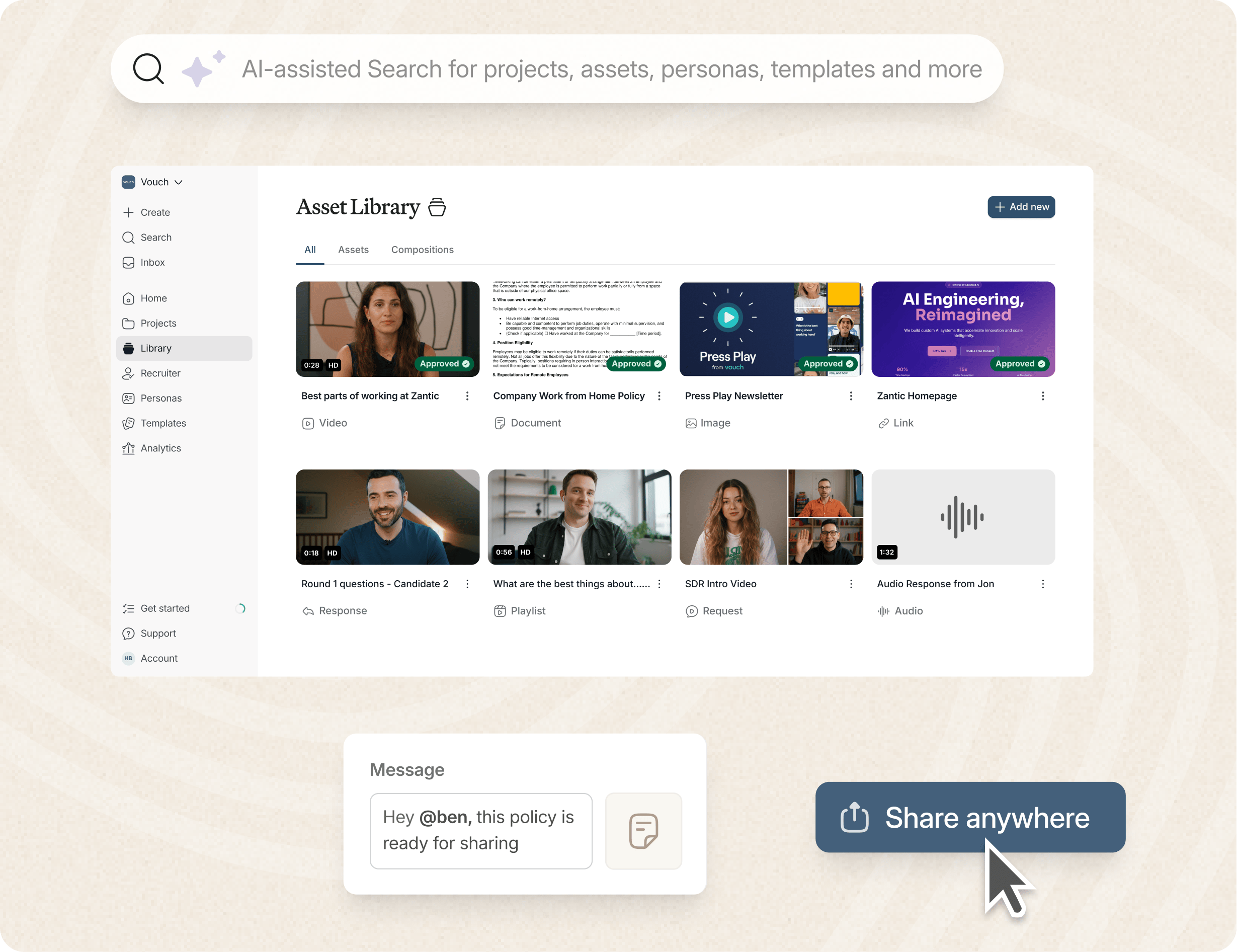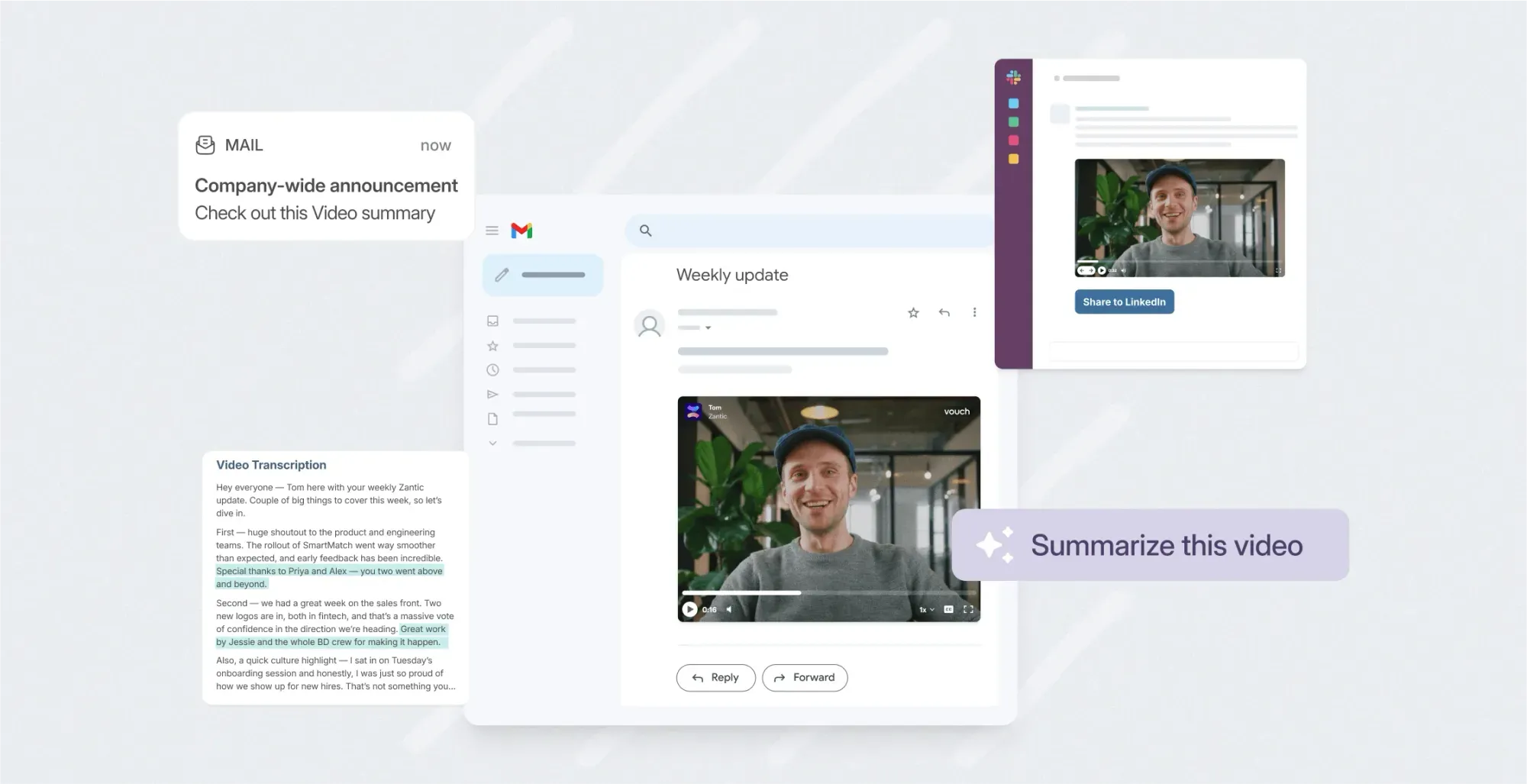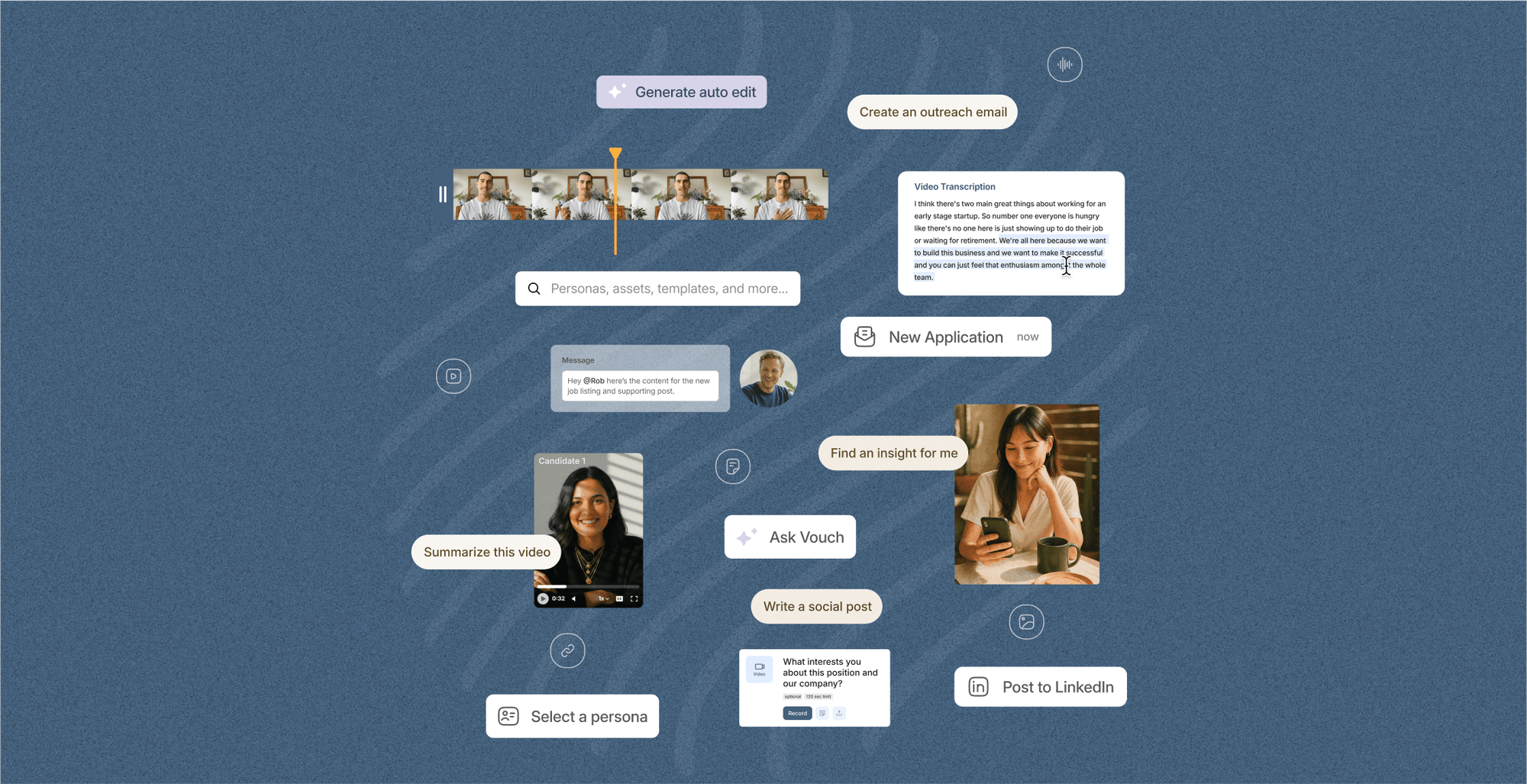The digital revolution over the last twenty years has transformed the way we work and collaborate, and now, in 2025, AI has changed the way we work and communicate, too.
You can already automatically reply to messages with AI, and computers are increasingly becoming equipped with "co-pilot" keys that open AI tools.
It's quite remarkable how quickly we humans adapt to new technologies nowadays - and companies are trying to keep up.
When it comes to digital employee experience, employees (in the office and remote) are seeking seamless tools and ways to boost productivity, and this is where DEX really matters. If you get it wrong, you'll have frustrated employees and lower output.
So let's get started.
Key Highlights
- In today's workplace, making sure your employees have a seamless digital experience is vital.
- Companies should figure out which tech tools are must-haves and which ones are clunky and need replacing.
- By putting employee experience first, choosing the right technologies becomes a lot easier.
- Modern tools like Vouch are taking digital experience to a new level of workplace personalization.
What Is Digital Employee Experience (DEX)?
Digital Employee Experience (DEX) refers to the sum of interactions and touchpoints your employee has with your organization through digital channels.
DEX encompasses your workplace technology, processes, and even digital company culture, which is key to employee engagement and productivity. It also includes your employer brand, which is key to attracting the best talent to your company.
A complete DEX solution involves Managers, HR, IT, team leaders, and employees all working together to enhance your digital workplace.
The AI-enabled workspace for talent teams.
- Unified workspace for talent teams
- Accelerate hiring with AI tools
- Auto-generate polished hiring and employer brand content
- Easily repurpose assets across all channel

Why Is Digital Employee Experience So Important?
Creating a remarkable digital employee experience (DEX) is not just a "nice to have."
By focusing on DEX, your employees will have less stress when it comes to getting their work done more smoothly and productively.
When you get your digital employee experience (DEX) right, your employees are more engaged, happy, and likely to do their very best work.
With the right digital tools and technologies, your employees will also feel appreciated and supported by your company, which is key to creating an amazing company culture.
But if your DEX is lacking, it can lead to annoyance, people checking out mentally, or even quitting due to frustrations with your processes and communication.
What Is The Evolution of Digital Employee Experience (DEX)?
The way we work has changed significantly over the last 20 years, shaped by technological advancements, changing work environments, and evolving employee expectations.
Here's a brief overview:
1. Early Stages: Basic Digital Tools
- 1990s-2000s: The initial phase focused on the introduction of basic digital tools such as email, intranets, and office productivity software.
- Challenges: Limited integration, and a lack of user-friendly interfaces and support. The focus was more on technology deployment rather than user experience.
2. Advent of Enterprise Software
- Late 2000s-Early 2010s: Companies began adopting more sophisticated enterprise software, including HR management systems, customer relationship management (CRM) systems, and enterprise resource planning (ERP) systems.
- Challenges: These systems often had complex interfaces and poor UX, leading to user frustration and decreased productivity.
3. Consumerization of IT
- 2010s: With the rise of smartphones and consumer apps, employees began expecting the same level of usability and functionality in workplace technologies. This led to the consumerization of IT, where workplace technologies became more user-centric.
- Challenges: Ensuring security and compliance while providing easy-to-use tools was a major challenge. The rise of "the cloud" appeared at this time.
4. Integrated Digital Ecosystems
- In the mid to late 2010s, organizations started to focus on creating integrated digital ecosystems, such as unifying platforms to provide a more seamless user experience, such as single sign-on (SSO), integrated communication platforms, and personalized employee portals.
- Challenges: Integration complexities for IT and developers, maintaining data integrity and ensuring user adoption.
5. DEX Focus on Employee Experience and Well-being
- Late 2010s-2020s: The focus shifted towards enhancing the overall employee experience, including their digital interactions. This included designing systems that support employee well-being, engagement, and productivity. It was at this time that we saw the rise of Employee experience platforms (EXPs), better employee support systems, and advanced analytics to understand and improve the employee journey.
- Challenges: Balancing privacy with personalization, managing change, and continuously evolving technologies.
6. Remote Work and Hybrid Work Models
- 2020s (Accelerated by the COVID-19 Pandemic): The pandemic forced a rapid shift to remote work, highlighting the importance of a robust digital employee experience. Companies had to quickly adapt to hybrid work models. At this time, we saw the rise of enhanced virtual collaboration tools, remote recruitment and onboarding solutions, virtual reality (VR) for training, and advanced cybersecurity measures. In 2023, we also saw most major apps introduce AI, like our Vouch AI editing suit and tools.
- Challenges: Ensuring equitable access to technology, managing remote team dynamics, and maintaining corporate culture in a remote setting.
7. Future DEX Trends
- Continued Evolution: The future of DEX includes further integration of AI and machine learning to provide personalized experiences, predictive analytics to preemptively address employee needs, and immersive technologies like augmented reality (AR) and VR for training and collaboration. We're already seeing the rise of AI as a workplace "co-pilot", which we expect will accelerate at a rapid rate.
- Focus Areas: Enhancing mental health support, fostering inclusivity, ensuring accessibility, and creating a seamless experience across physical and digital workspaces.
In summary, the evolution of the Digital Employee Experience has moved from basic digital tools to sophisticated, integrated ecosystems designed to enhance every aspect of the employee journey. The focus has shifted from purely functional technology to creating a holistic, engaging, and supportive environment that prioritizes employee well-being and productivity.
What Are The 5 Steps To Improving Your Digital Employee Experience?
The steps you can take right now to improve your digital employee experience (DEX) might be simpler than you think. Like customer experience, it all comes down to listening.
Here's a quick summary that we'll break down further below:
- Identify the digital tools that are the most user-friendly and intuitive in their areas.
- Evaluate your overall technology scene, including system compatibility, speed, data accessibility, and security.
- Ask your employees for feedback to identify areas needing improvement. Tools like Vouch can help here.
- Involve employees from all levels in improving DEX by getting their feedback while testing new tools (they will be using them, after all).
- Select the DEX tools that align with your broader company objectives while boosting employee satisfaction and productivity.
Let's expand on these steps:
Step 1: Identify The DEX Software That Is Leading The Market
Several Digital Employee Experience (DEX) tools are popular in the modern workplace, and these are just some suggestions for replacing the old clunky tools you may still be using.
Below is not a comprehensive list by any means; it just includes some leading tools that you probably already know. Many others have strengths in different areas, such as being better tools for smaller teams or remote workers.
We'll break down the DEX tools across different categories. Note that we'll leave out email and phone, as they are a given in most companies.
Communication and Collaboration Tools
- Microsoft Teams: A collaboration platform that integrates with Office 365, offering chat, video conferencing, file sharing, and integration with other Microsoft applications.
- Slack: A messaging platform for teams, providing channels for topic-based discussions, direct messaging, file sharing, and integration with various third-party apps.
- Vouch: Used by some of the world's best companies for internal communications, training, employer branding, and more purposes.
Project Management and Task Management
- Trello: A visual project management tool that uses boards, lists, and cards to help teams organize tasks and projects.
- Asana: A task management tool that allows teams to track projects, set deadlines, assign tasks, and monitor progress.
- Monday: A work operating system that enables teams to build custom workflows, track projects, and collaborate effectively.
Employee Engagement and Feedback
- Vouch: Again, this is a great tool for creating surveys and collecting employee feedback on video, so you can see your employees' non-verbal queues, too.
- Culture Amp: An employee engagement platform that provides tools for surveys, feedback, and performance management.
- Qualtrics: An experience management platform offering solutions for employee engagement, including surveys and feedback tools.
Human Resource Management Systems (HRMS)
- Workday: A cloud-based HRMS that offers solutions for HR, payroll, talent management, and employee benefits.
- BambooHR: An HR software for small and medium-sized businesses, providing features for applicant tracking, employee onboarding, and performance management.
- SAP SuccessFactors: A comprehensive HR suite that includes core HR, payroll, talent management, and employee experience solutions.
Learning and Development
- LinkedIn Learning: An online learning platform offering courses on various topics to support employee development and skill enhancement.
- Coursera for Business: Provides access to online courses and certifications from top universities and institutions for employee training.
- Udemy for Business: Offers a wide range of courses and training programs to help employees develop new skills.
Employee Wellness and Well-being
- Headspace for Work: A meditation and mindfulness app that provides resources to improve employee mental health and well-being.
- Virgin Pulse: A wellness platform offering programs for physical activity, nutrition, stress management, and overall well-being.
- Limeade: An employee engagement and well-being platform that provides tools to support health, well-being, and engagement initiatives.
Digital Workspaces and Employee Portals
- Microsoft SharePoint: A collaboration and document management platform that enables organizations to create intranets and team sites.
- Google Workspace: A suite of cloud-based productivity tools, including Gmail, Google Drive, Google Docs, and Google Meet.
- Workplace by Facebook: A collaboration platform that uses familiar Facebook features to enhance workplace communication and collaboration.
Employee Experience Platforms (EXPs)
- ServiceNow: Provides a comprehensive suite of digital workflows and services to enhance employee experience and productivity.
- Microsoft Viva: An employee experience platform integrated with Microsoft Teams, focusing on engagement, well-being, learning, and knowledge.
- Vouch: Designed to manage and improve the employee experience through surveys, feedback, and analytics.
These tools are instrumental in shaping a positive digital employee experience by addressing various aspects of work, from communication and collaboration to wellness and professional development.
Step 2: Engage Stakeholders and Gather Feedback
Engaging your employees and stakeholders is vital for your digital employee experience strategy.
Understanding the diverse DEX needs within your organization is vital to ensuring that your DEX solution resonates with all users, including employees, managers, and perhaps even clients in B2B companies.
Gathering feedback with tools like Vouch will help you understand and address pain points effectively, resulting in a better employee digital experience.
Step 3: Set Clear Goals for Improvement
Define specific objectives for your digital employee experience strategy, and set key performance indicators (KPIs) to measure progress and success.
Setting clear goals enables a proactive approach to addressing poor experiences and boosting employee engagement. At the end of the day, you want to see more engaged, motivated employees who are empowered by your DEX tools and not held back by them.
Step 4: Choose and Implement Your DEX Tools
Once you have chosen the DEX tools you want to use, work with the IT team or developers to implement them and train your employees, too.
This is where the loop closes, from asking your employees about their pain points to implementing solutions and showing them you truly care about employee experience. When it comes to training, tools like Vouch are ideal, as you can create your own personalized in-house training videos to share with your wider team.
Step 5: Measure and Adjust Based on Feedback
To ensure the optimal digital employee experience, it's crucial to keep the feedback loop open.
By monitoring employee feedback on an ongoing basis, you can quickly identify pain points and areas needing improvement specific needs. Analytics tools can also help, but be careful because sometimes data only tells part of the picture, i.e., application engagement times will likely go down if they are more intuitive, as your employees won't need to spend so much time in them.
Additionally, DEX management tools that collect usage and performance data can provide valuable insights into what is working and what needs adjustment, including response times and employee productivity. This feedback and data can ultimately help improve your bottom line, making DEX an invaluable investment on many levels, including employee retention.
What Are The Key Challenges Of DEX?
The biggest challenge is catering to a diverse group of employees. Not everyone will love every tool.
The second biggest challenge is change. Technology and AI are evolving at such a rapid rate that it's hard for anyone to keep up. But that's why it usually makes sense to use a larger tool (like those above), as you can be sure that these tools will keep an eye on the latest market trends and have the key changes on their roadmap.
Data security and privacy are also challenges, and we'll soon write another article on them.
What's The Future of the Digital Employee Experience?
The key word here is "experience", and so no matter what technology and tools are launched, they have to be great for your employees.
Unlocking the potential of AI, data analytics, and personalized experiences will shape the future of Digital Employee Experience and your overall DEX strategy.
One prominent trend is the increasing integration of AI-powered chatbots for employee support and the rise of automation for routine tasks and even some more complex ones like AI Video editing to improve operational efficiency.
Embracing these trends is not really an option anymore, either, as slow, clunky companies often have a poor employer brand. This creates a vicious cycle in which top talent will choose another employer who focuses on DEX, or they simply won't stay long.
Predictions for the Next Decade of DEX
In the next ten years, we're going to see some really cool changes in how digital tools and technology make work better for everyone. Here's what might happen with the digital employee experience (DEX):
- For starters, companies are already putting their employees first, making sure their day is facing bigger challenges than their internal software and communications tools.
- Then, with new tech like AI, automation, and machine learning, employees will get even more done without having to waste time on small tasks.
- And then, no one really knows. AI is already replacing jobs, but the extent of this is still to be seen.
FAQs
What is a digital employee experience?
A digital employee experience (DEX) refers to the overall perception and interaction employees have with the digital tools, platforms, and technologies provided by your organization to support their productivity, engagement, and well-being.
What is DEX in HR?
Digital Employee Experience (DEX) in HR refers to the use of digital tools and technologies to enhance and streamline the employee experience, including communication, collaboration, engagement, and overall productivity tools.
What is a DEX solution?
A DEX solution is a digital platform or suite of tools designed to improve the overall experience of employees by enhancing communication, collaboration, productivity, and engagement.
How is AI helping to improve DEX?
AI is enhancing Digital Employee Experience (DEX) by personalizing interactions through predictive analytics, automating routine tasks to increase productivity, enabling intelligent insights into employee behavior and preferences, and supporting virtual assistants for better employee support and engagement.
What is the ideal DEX?
The ideal Digital Employee Experience (DEX) includes a seamless integration of intuitive and user-friendly technologies that enhance communication, collaboration, and productivity, supported by personalized and adaptive AI-driven tools that prioritize employee well-being, development, and engagement.
How does digital employee experience impact overall employee satisfaction and productivity?
A positive digital employee experience enhances overall employee satisfaction and productivity by providing seamless, efficient, and engaging tools and platforms that support their work and well-being.
What are some common challenges faced by organizations in enhancing digital employee experience?
Organizations' common challenges in enhancing the digital employee experience include integrating diverse systems, ensuring user adoption of new technologies, maintaining data security and privacy, and balancing personalized experiences with standardization across the organization.
Conclusion
In today's evolving digital world, it's important to focus on the Digital Employee Experience (DEX) if you want to boost employee engagement, productivity and improve your company's overall culture.
However like any new technology, it's crucial to get past hurdles such as security and catering to all of your diverse employees. As companies all over the world figure out their path through digital transformation and AI transition, making employee experience a top priority is going to be key for every organization. So if you put your employees and your employer brand first with your DEX strategy, you'll be on a path to success.
Like to try Vouch?
Loved by companies like Canva, Nike, Cisco, HubSpot, Amazon, and more, tools like Vouch make leveraging video in your business remarkably easy.
Be sure to book a Vouch demo today and chat with a video content expert.
You might also like

Elevate Your Brand Today With Vouch
Discover how Vouch can accelerate talent acquisition while helping you stay on-brand.


_%2520The%25202024%2520Guide.png)



